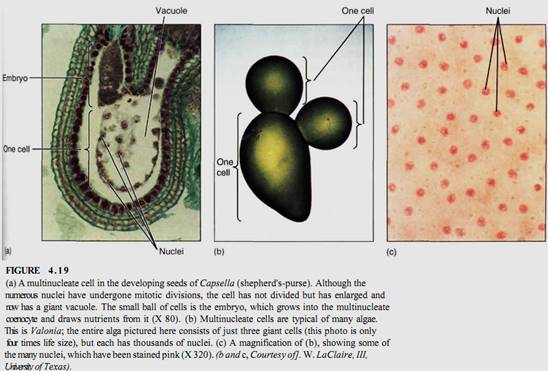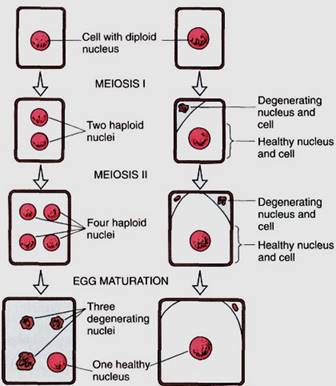

النبات

مواضيع عامة في علم النبات

الجذور - السيقان - الأوراق

النباتات الوعائية واللاوعائية

البذور (مغطاة البذور - عاريات البذور)

الطحالب

النباتات الطبية


الحيوان

مواضيع عامة في علم الحيوان

علم التشريح

التنوع الإحيائي

البايلوجيا الخلوية


الأحياء المجهرية

البكتيريا

الفطريات

الطفيليات

الفايروسات


علم الأمراض

الاورام

الامراض الوراثية

الامراض المناعية

الامراض المدارية

اضطرابات الدورة الدموية

مواضيع عامة في علم الامراض

الحشرات


التقانة الإحيائية

مواضيع عامة في التقانة الإحيائية


التقنية الحيوية المكروبية

التقنية الحيوية والميكروبات

الفعاليات الحيوية

وراثة الاحياء المجهرية

تصنيف الاحياء المجهرية

الاحياء المجهرية في الطبيعة

أيض الاجهاد

التقنية الحيوية والبيئة

التقنية الحيوية والطب

التقنية الحيوية والزراعة

التقنية الحيوية والصناعة

التقنية الحيوية والطاقة

البحار والطحالب الصغيرة

عزل البروتين

هندسة الجينات


التقنية الحياتية النانوية

مفاهيم التقنية الحيوية النانوية

التراكيب النانوية والمجاهر المستخدمة في رؤيتها

تصنيع وتخليق المواد النانوية

تطبيقات التقنية النانوية والحيوية النانوية

الرقائق والمتحسسات الحيوية

المصفوفات المجهرية وحاسوب الدنا

اللقاحات

البيئة والتلوث


علم الأجنة

اعضاء التكاثر وتشكل الاعراس

الاخصاب

التشطر

العصيبة وتشكل الجسيدات

تشكل اللواحق الجنينية

تكون المعيدة وظهور الطبقات الجنينية

مقدمة لعلم الاجنة


الأحياء الجزيئي

مواضيع عامة في الاحياء الجزيئي


علم وظائف الأعضاء


الغدد

مواضيع عامة في الغدد

الغدد الصم و هرموناتها

الجسم تحت السريري

الغدة النخامية

الغدة الكظرية

الغدة التناسلية

الغدة الدرقية والجار الدرقية

الغدة البنكرياسية

الغدة الصنوبرية

مواضيع عامة في علم وظائف الاعضاء

الخلية الحيوانية

الجهاز العصبي

أعضاء الحس

الجهاز العضلي

السوائل الجسمية

الجهاز الدوري والليمف

الجهاز التنفسي

الجهاز الهضمي

الجهاز البولي


المضادات الميكروبية

مواضيع عامة في المضادات الميكروبية

مضادات البكتيريا

مضادات الفطريات

مضادات الطفيليات

مضادات الفايروسات

علم الخلية

الوراثة

الأحياء العامة

المناعة

التحليلات المرضية

الكيمياء الحيوية

مواضيع متنوعة أخرى

الانزيمات
Less Common Types of Division
المؤلف:
AN INTRODUCTION TO PLANT BIOLOGY-1998
المصدر:
JAMES D. MAUSETH
الجزء والصفحة:
18-10-2016
2359
Less Common Types of Division
Cytokinesis and karyokinesis are often so closely associated that we tend to think of them as two aspects of one process. In numerous tissues, however, karyokinesis occurs without cytokinesis, and multinucleate cells are formed. The nutritive tissue of many seeds goes through a phase in which its cells are multinucleate (Fig. 4.19), and in many algae all the cells are like this. If the cell becomes very large and has hundreds or thousands of nuclei, it is called a coenocyte.
On the other hand, it is possible for cell division to occur without nuclear division; this is most common in algae, fungi, and the nutritive tissues of seeds. The cells become multinucleate and persist in that condition for some time; then cell division begins as new walls are organized around each nucleus and its accompanying cytoplasm (see Fig. 20.13). At present the selective advantage of this behavior is not known.
In meiosis, the processes of cytokinesis and karyokinesis are often not directly linked. In some species, cytokinesis happens after both meiosis I and meiosis II, and four haploid cells result from each original diploid mother cell.


FIGURE 4.20: In animals and some plants, the meiosis that is part of egg production produces only one large haploid cell. (a) In some species, meiosis results in four haploid nuclei; no cytokinesis occurs and all four nuclei are temporarily in one cell until degeneration eliminates three of them. (b) In other species, after meiosis I occurs, cytokinesis places one nucleus in a small cell, and both nucleus and cell degenerate before they can undergo meiosis II. The nucleus of the larger cell does undergo meiosis II, and again one daughter nucleus is placed in a small cell that degenerates. Only three nuclei are ever formed, and only one survives.
cells result from each original diploid mother cell. In other species, no cytokinesis occurs after meiosis I but a double cytokinesis occurs after meiosis II, again resulting in four haploid cells. For example, pollen grains can form either way, and meiosis results in four haploid cells. But in many organisms, no cytokinesis occurs at all during the meiosis that leads to the formation of eggs. The final cell is tetranucleate and may remain that way, or three of the nuclei may degenerate and produce only a single uninucleate haploid egg cell by meiosis (Fig. 4.20). It seems to be selectively advantageous to produce one large egg rather than four small ones.
 الاكثر قراءة في مواضيع عامة في علم النبات
الاكثر قراءة في مواضيع عامة في علم النبات
 اخر الاخبار
اخر الاخبار
اخبار العتبة العباسية المقدسة

الآخبار الصحية















 قسم الشؤون الفكرية يصدر كتاباً يوثق تاريخ السدانة في العتبة العباسية المقدسة
قسم الشؤون الفكرية يصدر كتاباً يوثق تاريخ السدانة في العتبة العباسية المقدسة "المهمة".. إصدار قصصي يوثّق القصص الفائزة في مسابقة فتوى الدفاع المقدسة للقصة القصيرة
"المهمة".. إصدار قصصي يوثّق القصص الفائزة في مسابقة فتوى الدفاع المقدسة للقصة القصيرة (نوافذ).. إصدار أدبي يوثق القصص الفائزة في مسابقة الإمام العسكري (عليه السلام)
(نوافذ).. إصدار أدبي يوثق القصص الفائزة في مسابقة الإمام العسكري (عليه السلام)


















